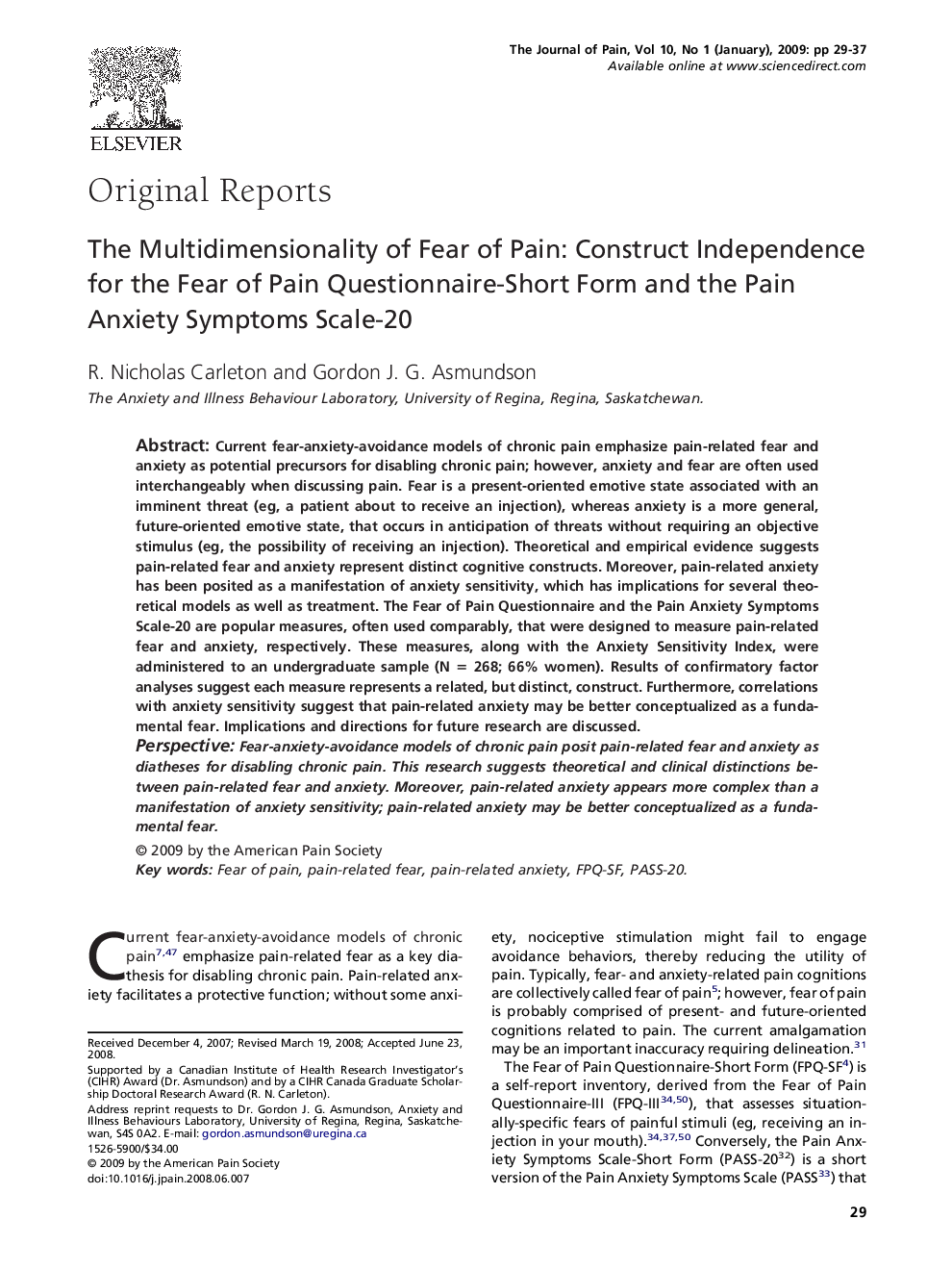| کد مقاله | کد نشریه | سال انتشار | مقاله انگلیسی | نسخه تمام متن |
|---|---|---|---|---|
| 2734894 | 1566819 | 2009 | 9 صفحه PDF | دانلود رایگان |

Current fear-anxiety-avoidance models of chronic pain emphasize pain-related fear and anxiety as potential precursors for disabling chronic pain; however, anxiety and fear are often used interchangeably when discussing pain. Fear is a present-oriented emotive state associated with an imminent threat (eg, a patient about to receive an injection), whereas anxiety is a more general, future-oriented emotive state, that occurs in anticipation of threats without requiring an objective stimulus (eg, the possibility of receiving an injection). Theoretical and empirical evidence suggests pain-related fear and anxiety represent distinct cognitive constructs. Moreover, pain-related anxiety has been posited as a manifestation of anxiety sensitivity, which has implications for several theoretical models as well as treatment. The Fear of Pain Questionnaire and the Pain Anxiety Symptoms Scale-20 are popular measures, often used comparably, that were designed to measure pain-related fear and anxiety, respectively. These measures, along with the Anxiety Sensitivity Index, were administered to an undergraduate sample (N = 268; 66% women). Results of confirmatory factor analyses suggest each measure represents a related, but distinct, construct. Furthermore, correlations with anxiety sensitivity suggest that pain-related anxiety may be better conceptualized as a fundamental fear. Implications and directions for future research are discussed.PerspectiveFear-anxiety-avoidance models of chronic pain posit pain-related fear and anxiety as diatheses for disabling chronic pain. This research suggests theoretical and clinical distinctions between pain-related fear and anxiety. Moreover, pain-related anxiety appears more complex than a manifestation of anxiety sensitivity; pain-related anxiety may be better conceptualized as a fundamental fear.
Journal: The Journal of Pain - Volume 10, Issue 1, January 2009, Pages 29–37